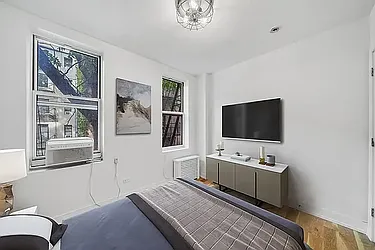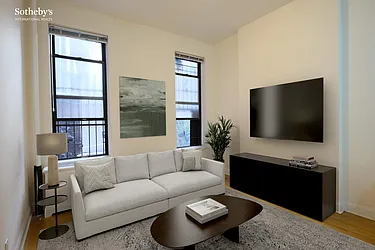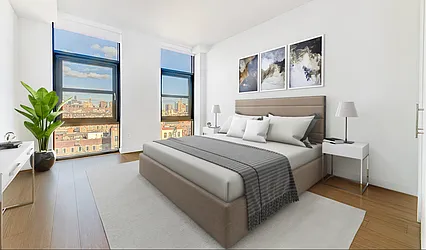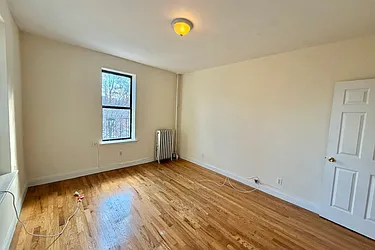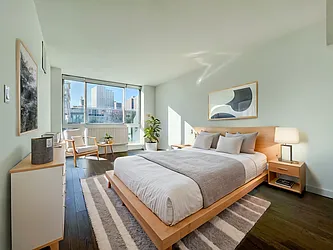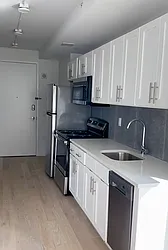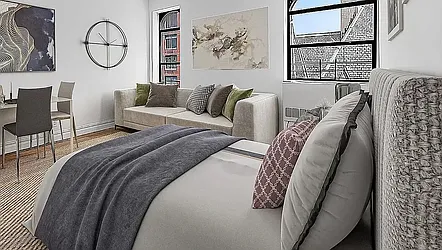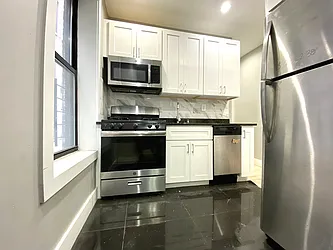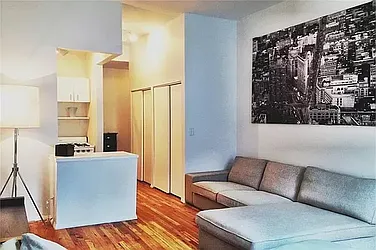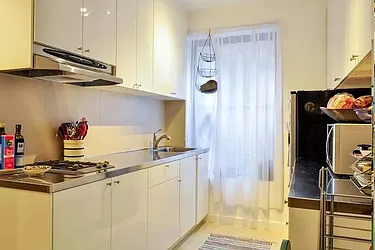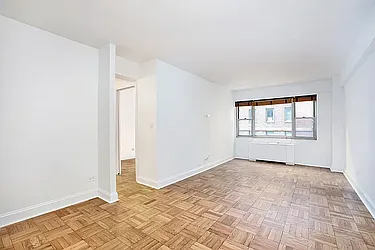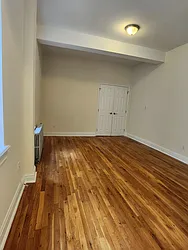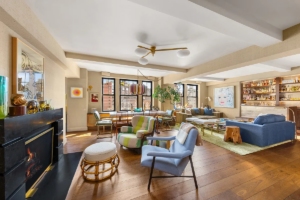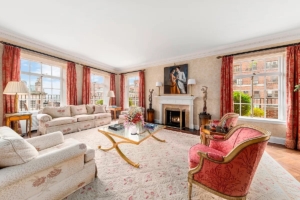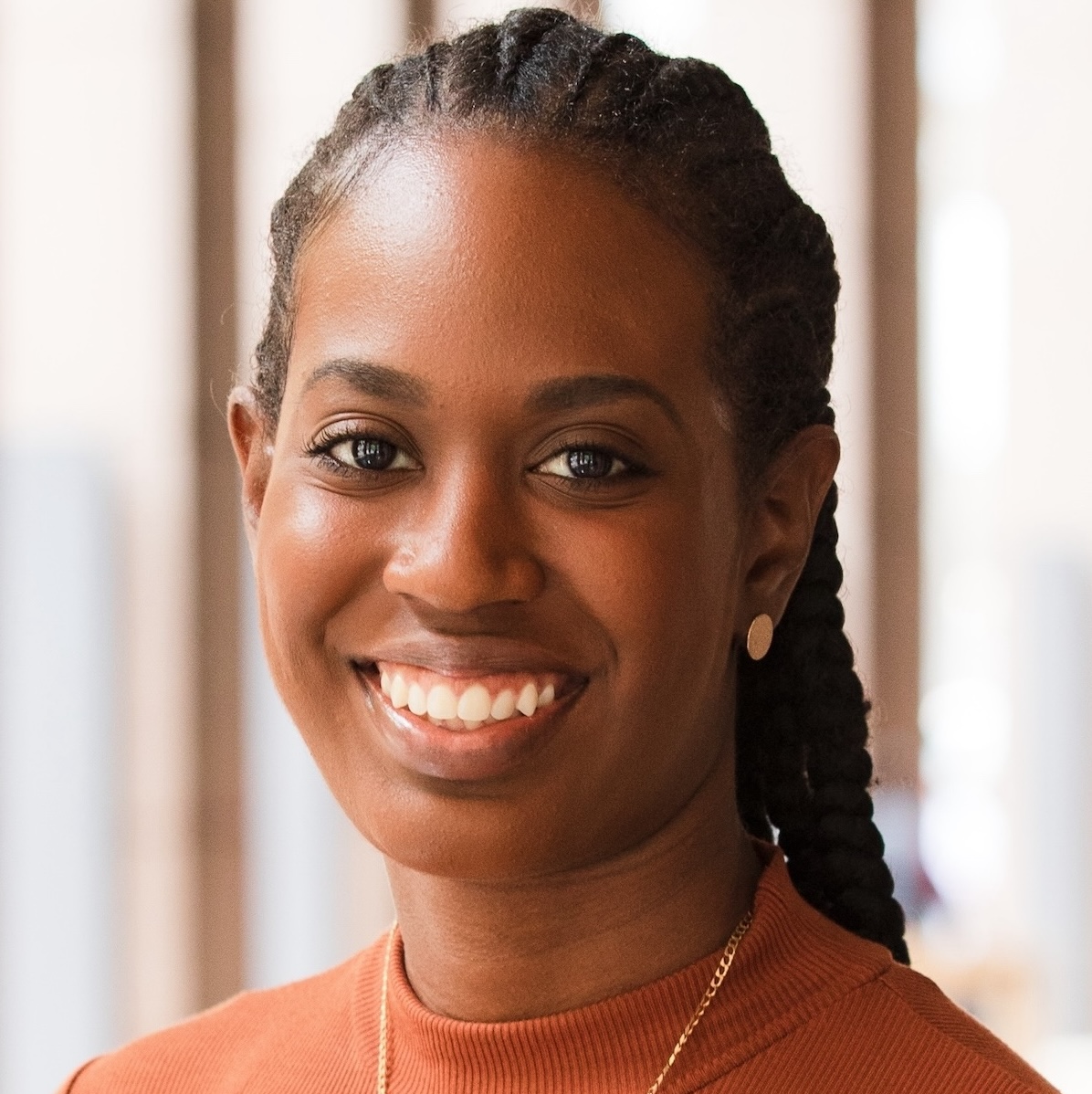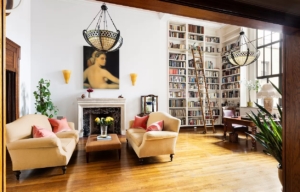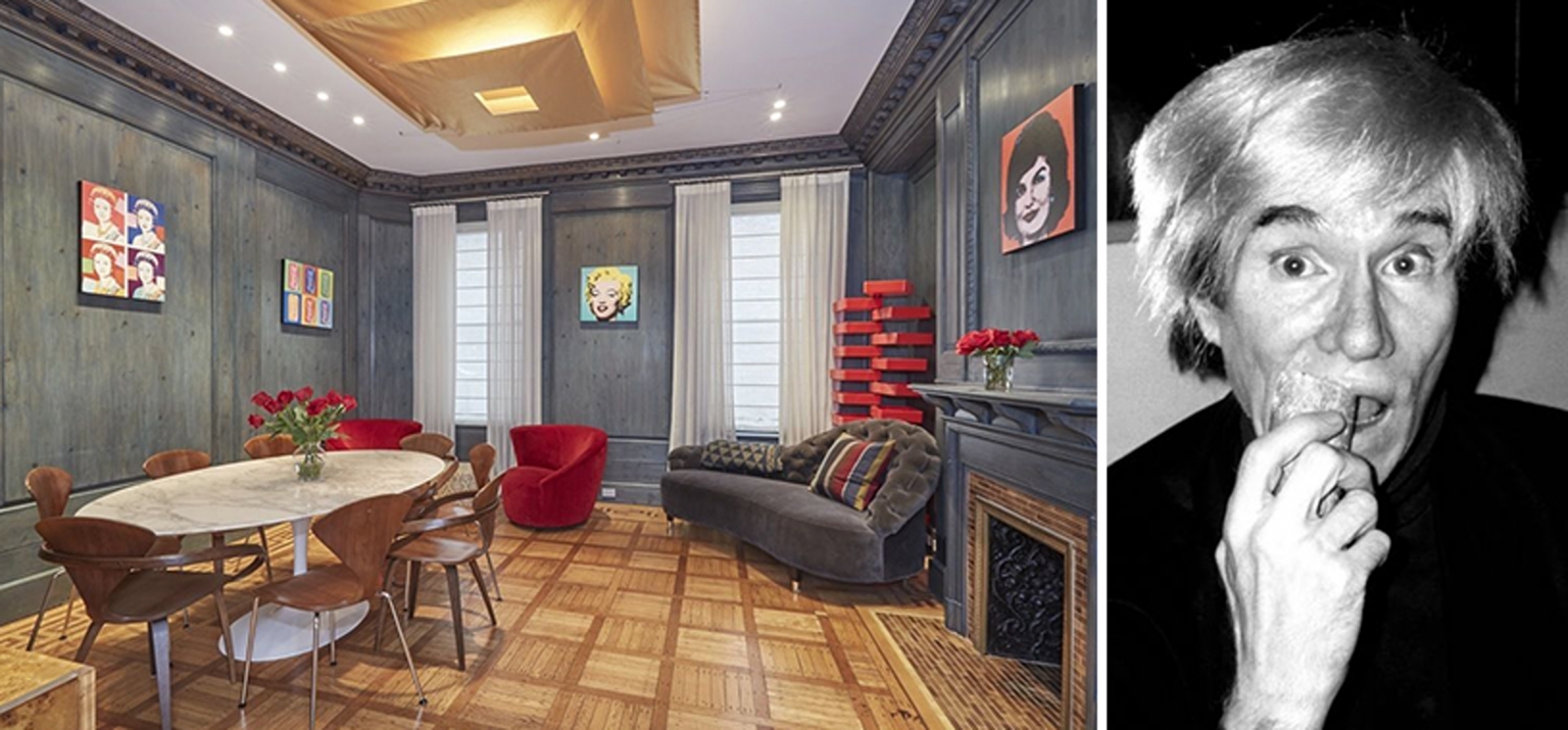
Andy Warhol in NYC at a party in 1986 and a listing photo of the townhouse at 1342 Lexington Ave., where he lived from 1959 to 1974.
Update, May 5, 2020: Just mention Andy Warhol to pretty much anyone, and they will immediately conjure images of his most iconic pieces, like soup cans or Jackie, nearly 60 years after the works’ creation. A new book title, “Warhol,” by American art critic Blake Gopnik, reveals details about the artist’s personal life as well as the influence Warhol left on the global art and cultural landscape. But Andy, of course, also left an indelible mark on New York City — as an artist, tenant, club organizer, rock band promoter, and even townhouse owner. If you’ve ever wondered, “where did Andy Warhol live?” we explore some of the buildings worked in and lived in by the iconic artist in NYC.
Andy Warhol in NYC
Pittsburgh is where Warhol was born, where he studied art, and where the Andy Warhol Museum is located — it’s worth a trip. But NYC was the place where Warhol’s genius at creating a marketplace for art in the age of consumerism and mass production exploded.
Where Did Andy Warhol Live in NYC?
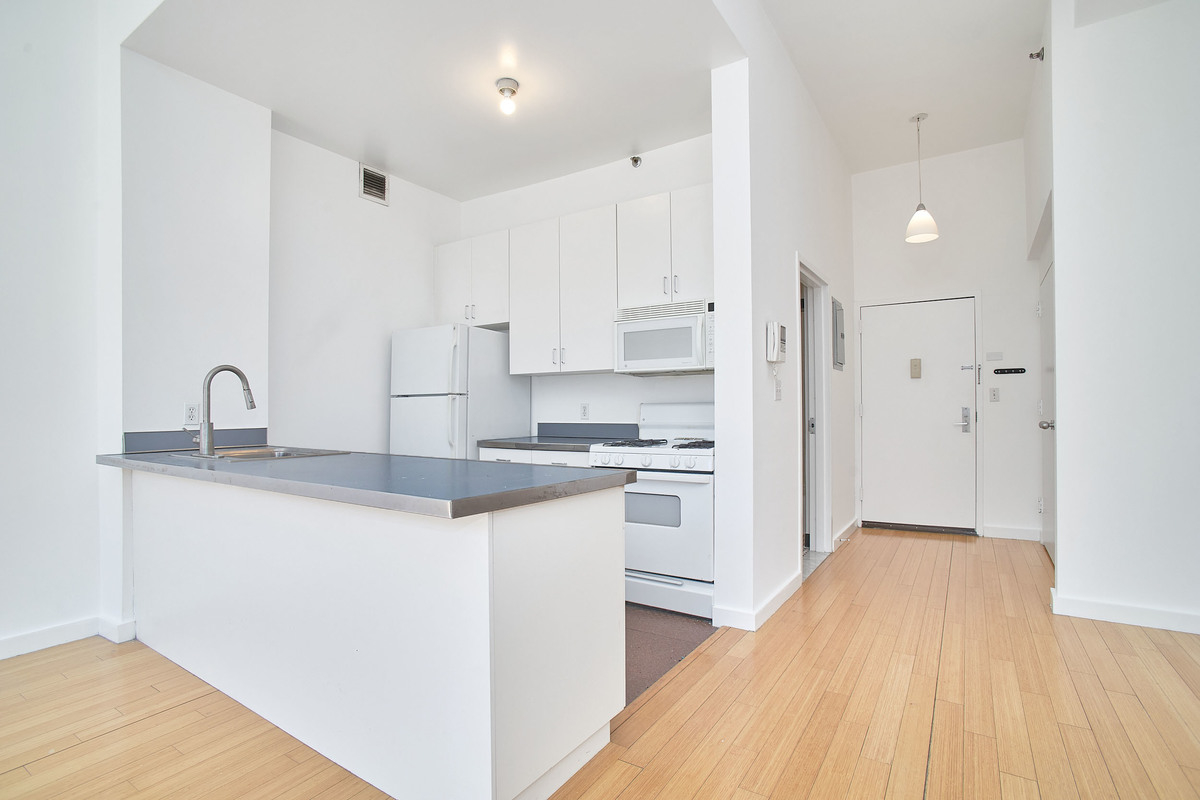
You can rent an apartment in the building that housed Warhol’s Electric Circus. (From a listing at 19 Saint Mark’s Pl. #4D)
Warhol moved to New York in 1949. His first apartment after moving from Pittsburgh was in the East Village on St. Mark’s Place. (Roughly 10 years later, he purchased a row house in the same neighborhood at 321 E. 6th St.) He began a lucrative career as a commercial illustrator, commanding a good salary and reputation.
Warhol’s association with St. Mark’s Place was cemented in 1966, with the Exploding Plastic Inevitable, a series of multimedia events curated by Warhol at his Electric Circus night club at 19-23 St. Mark’s Place.
It was at 19 St. Mark’s where Warhol backed one of the most significant pre-punk-era rock groups, the Velvet Underground, which was fronted by fellow downtown NYC icon Lou Reed.
That building is now home to 40 apartments, including this one available to rent at $3,850 a month.
Andy Warhol and The Factory in NYC
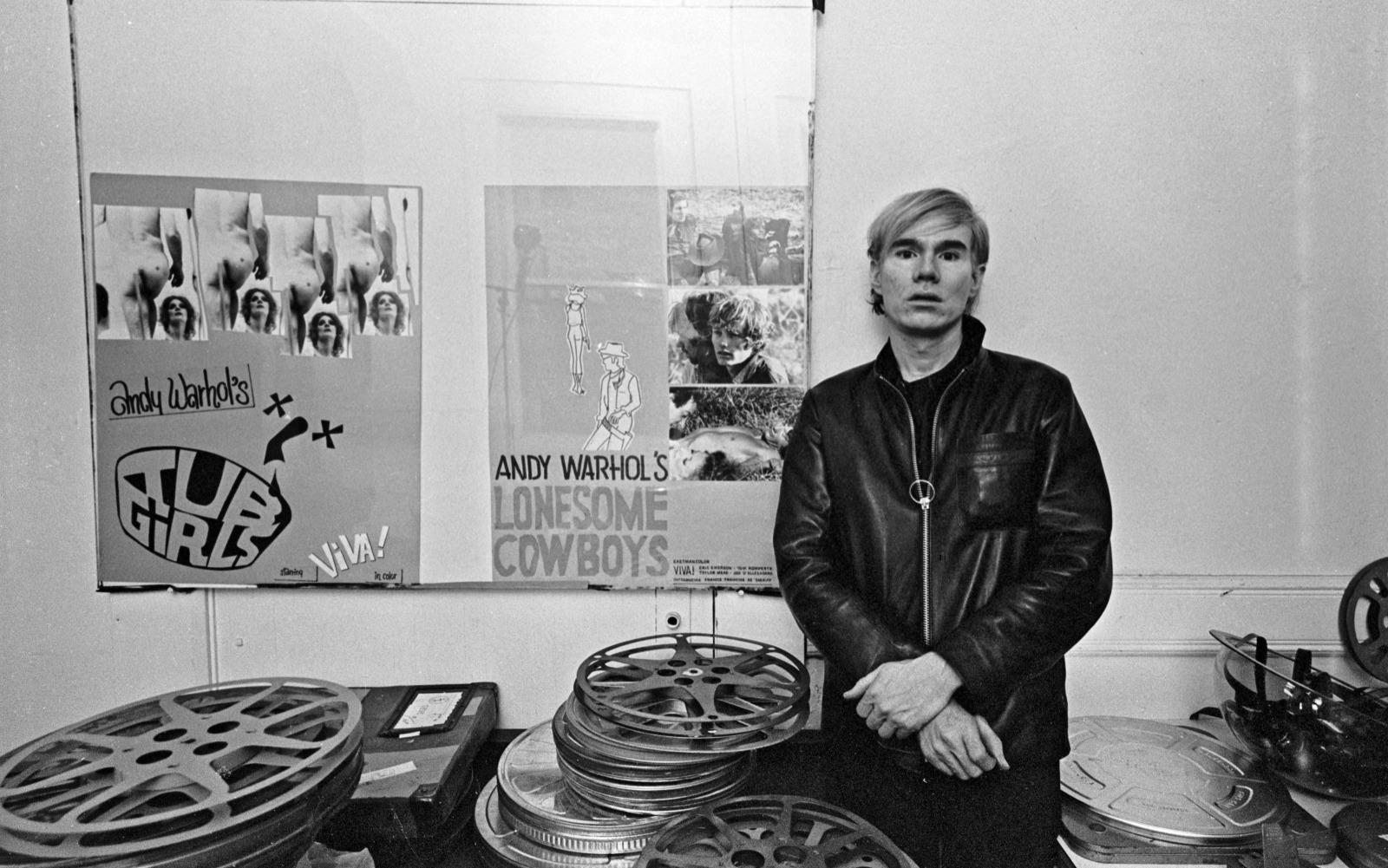
Warhol at the first Factory at 231 E. 47th St. (Getty Images)
Warhol’s work was done at The Factory, a series of studios where an entourage helped him produce works of art, make films, party, and create one of the most famous avant-garde salons in history.
- The first Factory (1962-68) was at 231 E. 47th St., in a building that no longer exists.
- The second Factory (1968-73) was at 33 Union Square, known as the Decker Building.
- The third Factory space was at 860 Broadway, right above what’s currently a Petco.
One of the most notable incidents of Warhol’s life took place 50 years ago at the Factory at 33 Union Square when on June 3, 1968, Valerie Solanas “carried a grudge and two guns” up to Warhol’s sixth-floor office and shot him.
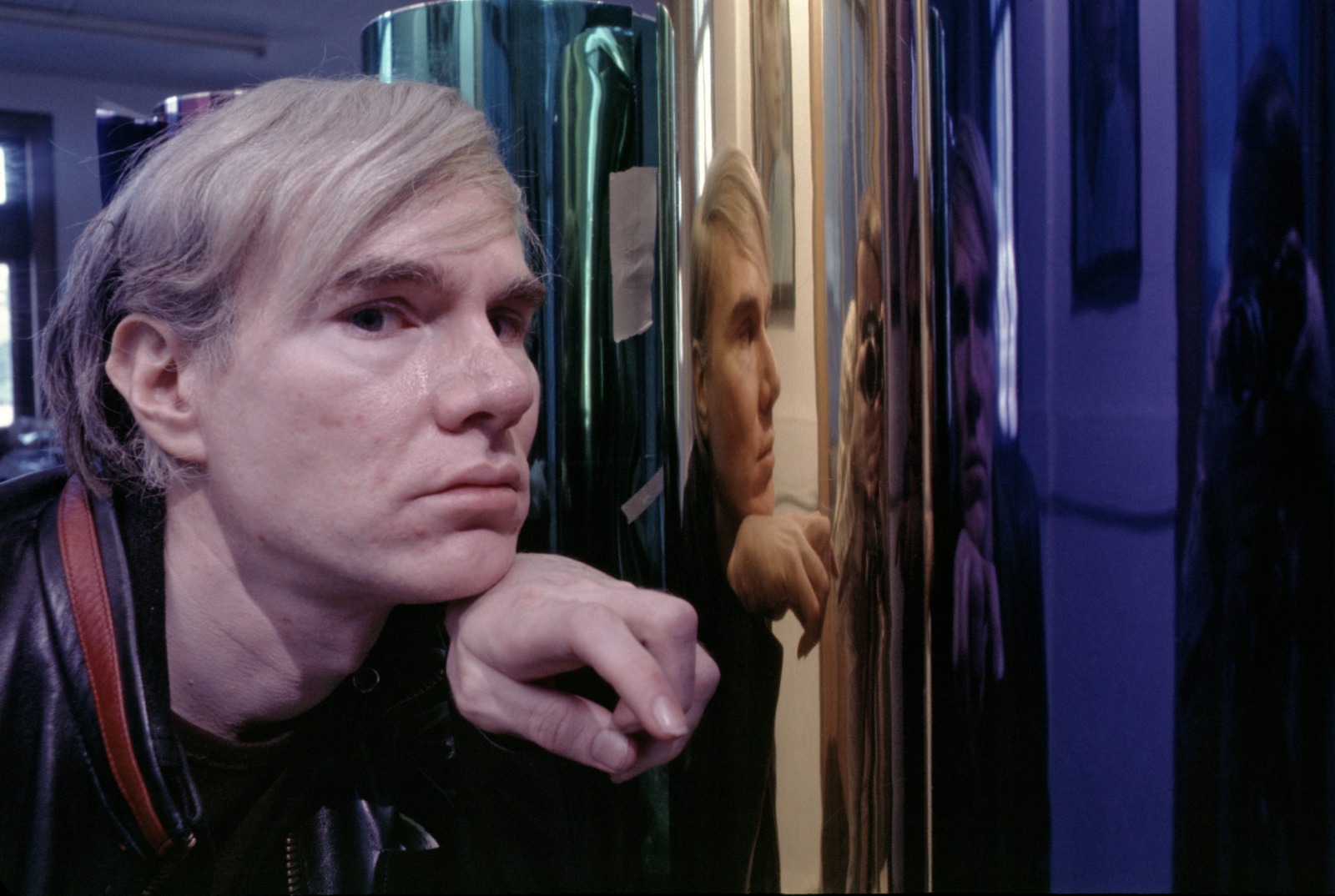
Andy Warhol at The Factory at 33 Union Square. (Getty Images)
NYC Rentals Below $4,000 on StreetEasy Article continues below
Where Did Andy Warhol Live in NYC’s Upper East Side?
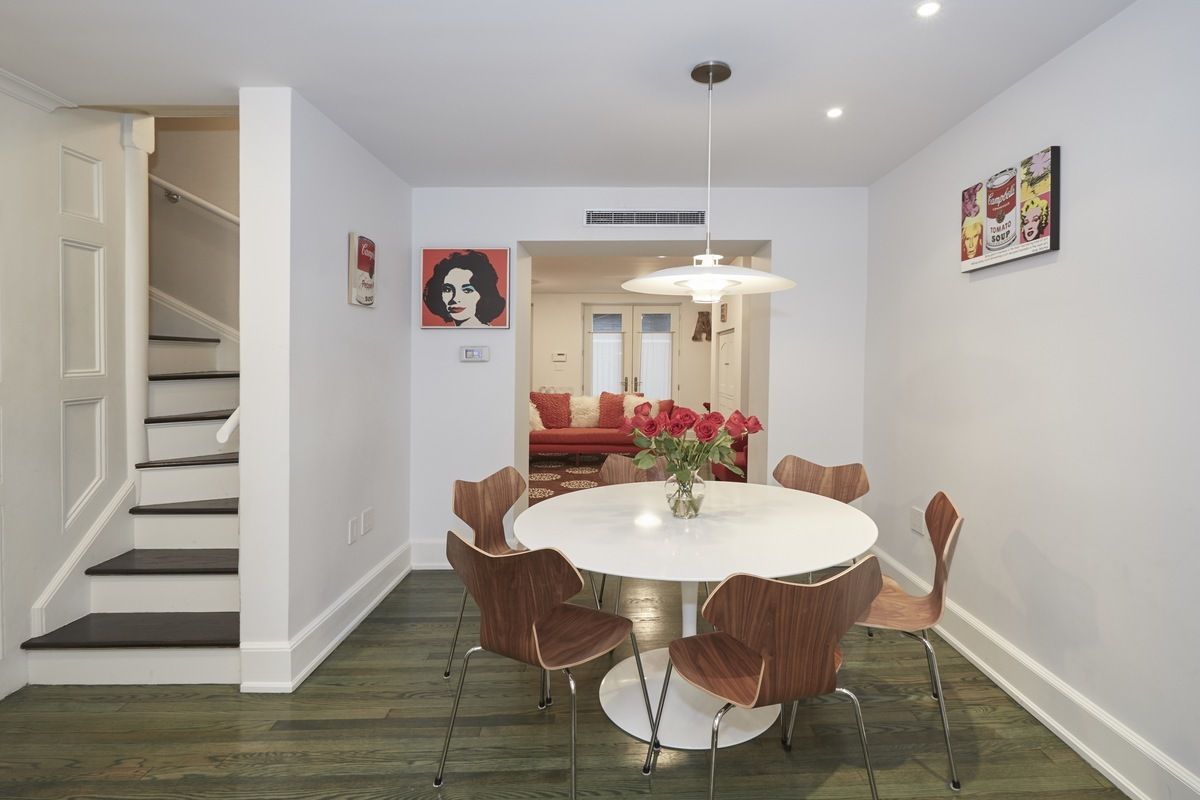
Warhol once owned this townhouse in Carnegie Hill. (From a listing at 1342 Lex. Ave.)
In 1959, with his mother moving from Pittsburgh to live with him, Warhol purchased the townhouse at 1342 Lexington Ave., where he lived and worked until 1974.
Warhol paid $60,000 for the property, putting $30,000 down from his savings from his commercial art career. By 1962, he had filled the Lexington townhouse with canvasses and boxes of collectibles, which would later become part of his massive artifacts collection. He needed more space to work, so he rented a nearby firehouse at 159 E. 87th St.
Even the original lease Warhol signed for this firehouse had tremendous collector value — the document was sold at auction by Sotheby’s in 2015 for $13,500. Warhol famously rented the city-owned building for $100 a month for three years. The 5,000-square-foot firehouse sold in 2016 for $9.975 million.
Andy Warhol’s Upper East Side Townhouse
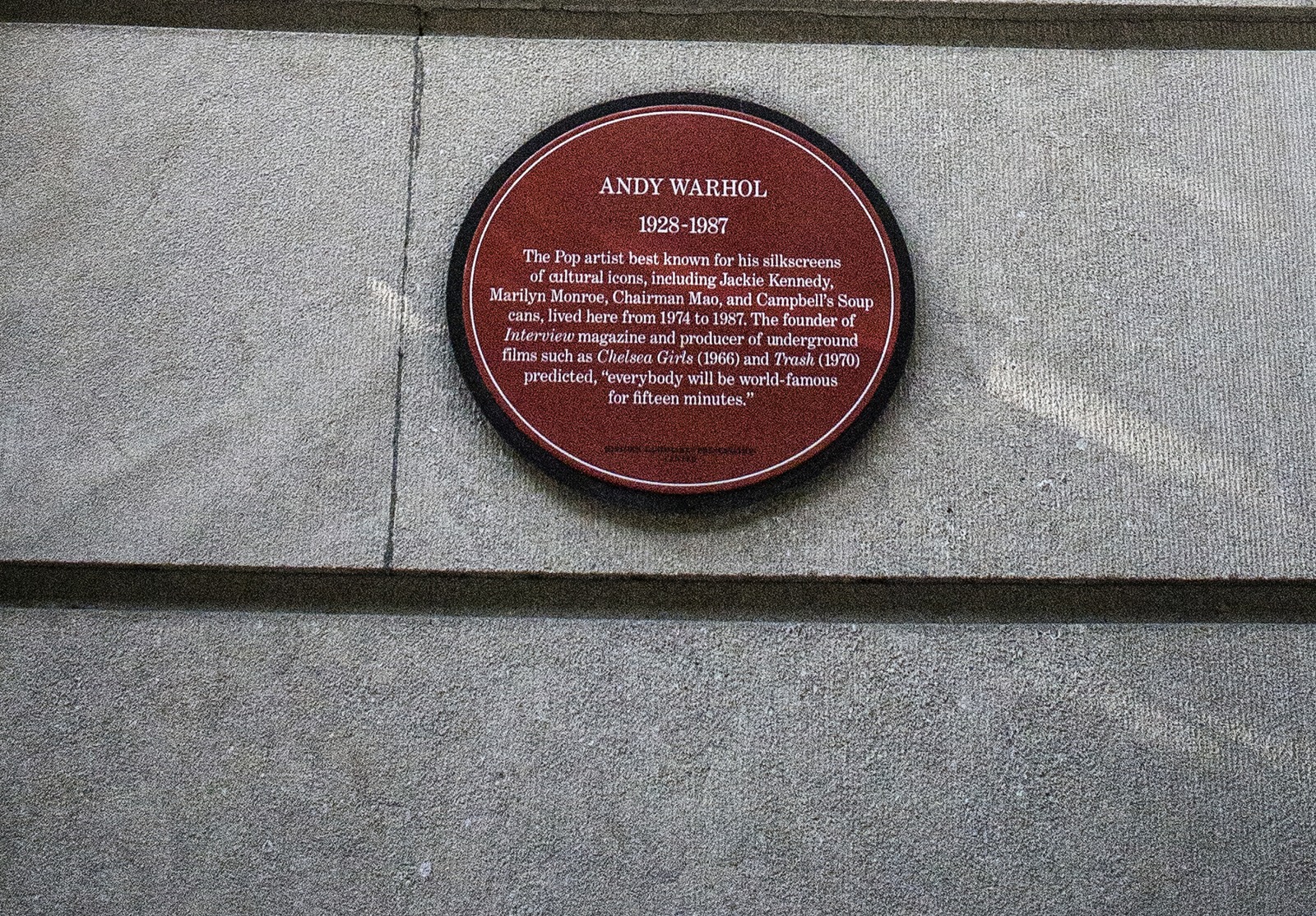
There is a plaque placed outside of Warhol’s former residence on 66th St.
For all the raucous downtown shenanigans that marked Warhol’s career, he remained a resident of the staid Upper East Side his entire life.
In 1974, Warhol purchased a single-family townhouse at 57 E. 66th St. for $310,000, and he lived there until death in 1987. The 8,000-square-foot townhouse was later bought by MTV chairman Thomas Freston, who paid $6.75 million and remodeled the place before seeking $35 million in 2008, later taking it off the market.
Warhol’s house at 1342 Lexington, however, has changed hands several times since he left there in 1974. It last sold in 2017, after being listed for sale for $8.75 million. It was purchased by Gina Argento, CEO of Broadway Stages, a film, TV, and music production facility company, who owns many NYC buildings.
Lower East Side Sought Warhol Museum
Given all the Warhol history in New York, developers for the mega-complex called Essex Crossing had been in serious negotiations for several years with the Andy Warhol Museum in Pittsburgh.
This vast development, which spans six acres and includes apartments, condos, retail space, markets, and senior housing, sought to add a new Andy Warhol Museum as well. Developers Delancey Street Associates offered to pay for the building as a cultural anchor and attraction.
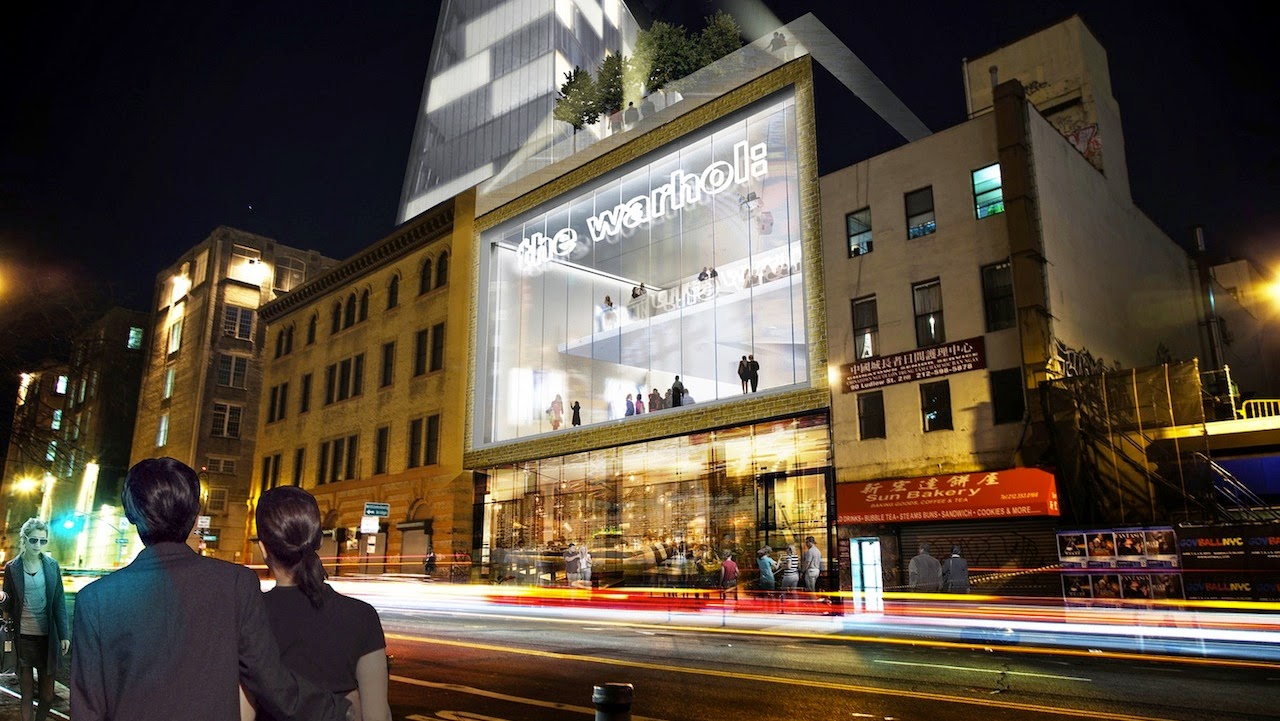
The Pittsburg-based Warhol museum board eventually nixed the proposed Warhol Museum at Essex Crossing in the Lower East Side.
The Warhol Museum in Pittsburgh considered the idea since it was a way to make sure Warhol’s work was consistently available to a worldwide audience via an NYC location. However, in 2015, museum officials finally declined the offer.
Perhaps it was to ensure the Pittsburgh museum remains a must-see for art lovers. Either way, the failure of the deal probably helped pave the way for the current Whitney retrospective — the first such Warhol exhibit in 30 years.
[This post has been updated and republished.]
Whether you’re looking to rent or to buy, find your next NYC apartment on StreetEasy.
